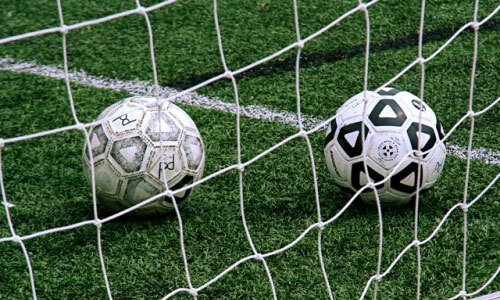In this article we will tell you how to choose a soccer ball. To ensure that it has served you for a long time, you should consider some of the nuances before buying, which are fully responsible for the quality and durability of any football.

What are soccer balls
On what kind of coverage the ball will be used, depends on its type. All soccer balls are divided into:
- Professional - you can use it on any surface and in any weather. However, this purchase will be quite expensive.
- Match - characterized by a large fortress and have the best grip on the playing field.
- Training - has a laminated coating, which repels dirt and water. Despite the fact that it is relatively inexpensive, it is strong enough and is able to withstand many attacks.
- Specialized - are weighted or lightened. Designed mainly for football freestyle( training technical strikes, feints, etc.)
If you are going to play football in a stadium that has a grass cover, then you need to choose between match and professional balls. To play on asphalt, concrete or any other solid surface, they are not intended. For use on such a surface, it is better to choose something cheaper, such as training balls.
Which soccer ball to choose depending on the material of the
production Previously, soccer balls were made of leather, now this can be met very rarely. Modern artificial materials, by many technical parameters, surpass the skin.
Therefore, when choosing a soccer ball, pay special attention to the fact that the material from which it was made was polyurethane( PU) or PVC( PVC).
Polyurethane is synthetic leather, which is very similar to natural leather. She is very strong and will serve a football with such a coating for a long time. The greater the thickness of the polyurethane from which the outer layer of the tire cover is made, the better.
Polyvinyl chloride is a synthetic leather that resembles plastic. In bad weather, a ball with a similar coating is poorly controlled. Such material is used to make the cheapest soccer balls, accordingly it is less qualitative.
We advise buying soccer balls, the outer layer of which is made of polyurethane.
Which lining is better
In order to give the ball an elasticity, sphericity and weight, a foam, fabric or non-woven material is used as the liner between the outer tire and the chamber. Foam and fabric give the ball the greatest softness, but these materials absorb very much and retain moisture, which ultimately affects the weight and balance of the soccer ball.

Therefore, many manufacturers have abandoned these cheap materials in favor of non-woven. Most often these are cotton fibers with a spiral shape and treated with polyurethane resin. As a result, the water-repellent properties of the ball increase, it becomes more elastic and, after impact, quickly assumes the original shape.
What should be the camera
The camera gives the ball a shape, holds the air and makes it more manageable. It is made of latex and butyl.
Soccer balls, the camera of which is made of latex, a more stable flight path, they have greater sensitivity and softness. In view of the fact that the latex chambers are porous, they pass air. Therefore, you need to pump them more often.
Butyl chambers, perfectly hold the air, but they are stiffer and less sensitive than latex ones. Most often, football balls with a butyl chamber have a laminated surface. To ensure that the air is kept better, in some balls, the chamber of which is made of latex, butyl valves are used.
Panels
The top layer of any soccer ball consists of different cells( panels).These panels can be stitched, glued or joined to each other by thermal treatment. Best if you select a ball that has 32 panels that are sewn together with polyester threads. High-quality balls are sewn by hand, less quality stitches are machine-made.
Most often, a panel of cheap soccer balls, glued together and attached to the lining. Such a product possesses increased rigidity.
Choose the size of a soccer ball.
Before you buy a soccer ball, you need to determine its size, which directly depends on the age of its future exploiter. There are three main sizes:
- 3rd size, these are soccer balls with a circumference of 57 to 60 cm and a weight of 311 to 340 grams. It is intended for children under 8 years old.
- 4-th size, balls with a circumference of 62.5 to 65 cm, and weight from 340 to 368 grams. Designed for children from 8 to 12 years.
- The balls of the 5th size have a circumference of 67.5 to 70 cm and a weight of 396 to 453 grams. They are intended for teenagers and adults from 12 years and older.
In order for a soccer ball to serve you as long as possible, it is advisable to pump it up to a pressure of 0.7 to 1 atmosphere. In the process of the game, it is desirable to lower the ball a little. In case you smeared it or wet it, it is necessary to wipe the front part with a cloth and dry the ball at room temperature.



